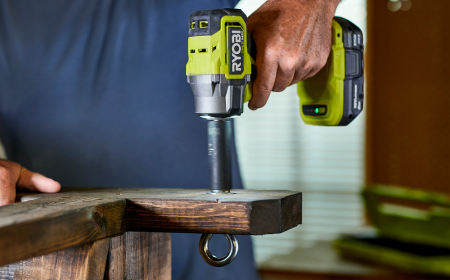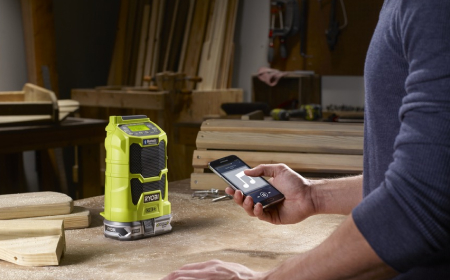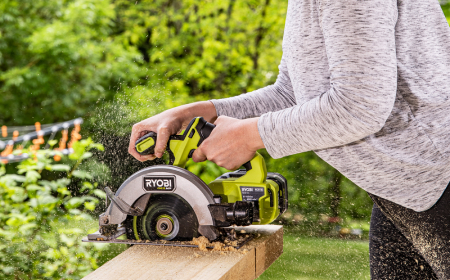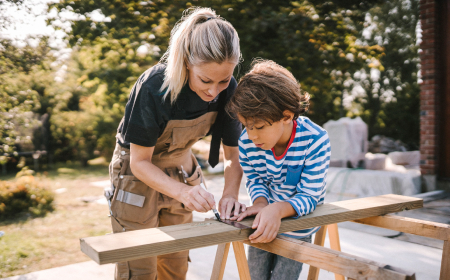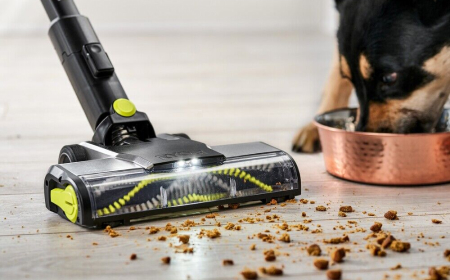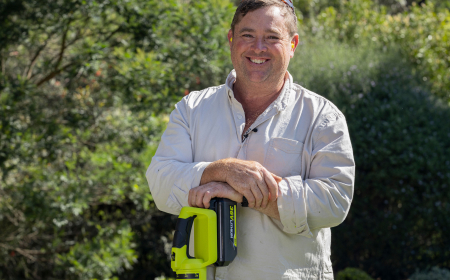Before you begin:
Make sure you have the right tools to install - see: Tools required to install RYOBI LINK to a plasterboard wall.
Don’t use a Drill Bit larger than a 9mm drill bit to make the holes.
Only install screws into structurally sound supports (such as studs) in areas where no electrical wires, utility cables, pipes, or other obstructions are located.
To find the studs, you'll need a stud finder, which helps locate studs behind plasterboard walls.
Sometimes Stud Finders aren't 100% effective, so even if the Stud Finder successfully locates studs, we recommend driving a small nail in an area that a LINK Rail will conceal the hole. If the nail easily goes all the way through, then the stud has been missed.
Regardless of construction type, the wall may contain electrical wiring, utility cables, plumbing pipes, and other obstructions. If you’re unsure, seek the advice of a qualified tradesperson.
What is a standard plasterboard wall?
A standard plasterboard wall consists of vertical timbers known as studs, which are centrally spaced apart 450mm by noggins.
Plasterboard sheets are then fixed to the frame.
Some areas of the wall studs may be spaced wider or narrower.
How to secure RYOBI LINK Rails to a plasterboard wall?
RYOBI LINK Rails are secured to the wall with screws directly into one or two studs, and wall anchors into the plaster board.
For maximum holding strength, it’s recommended to secure the first rail centred to two studs.
One stud is the minimum requirement, so if two studs can't be found, ensure that rails are fixed centred to at least one stud.
| Step | Action |
|---|---|
| 1. | Position your level where the top of your first rail will be. Draw a line across each of the two stud marks. |
| 2. | While holding the rail centrally across the two studs, mark their positions on the top and bottom installation channels and through the two holes at each end of the rail. Tip: Use a spirit level to ensure the rail is horizontal before marking the holes. |
| 3. | Remove the rail, then drill 9mm holes through the left and right end marks. These holes will be for the supplied plasterboard wall anchors. |
| 4. | To install each of the 4 wall anchors, use your fingers to firmly squeeze the wings inwards. |
| 5. | Then press the anchor into the pilot hole and tap the head of the anchor lightly with a hammer until it is flush with the wall. |
| 6. | Reposition the rail back on the wall and secure each end firmly into the wall anchors using the supplied screws. Tip: Don’t overtighten the screws in the wall anchors. |
| 7. | Next, at your stud markings, drill 3mm pilot holes through the middle of the top and bottom installation channels and directly into the studs. Then secure with 4 of the screws provided. |
| 8. | Repeat the process for each additional wall rail, using the tabs to align the additional rails left, right, above and below. |
RLWK15, RLWK12, RLWK7.
